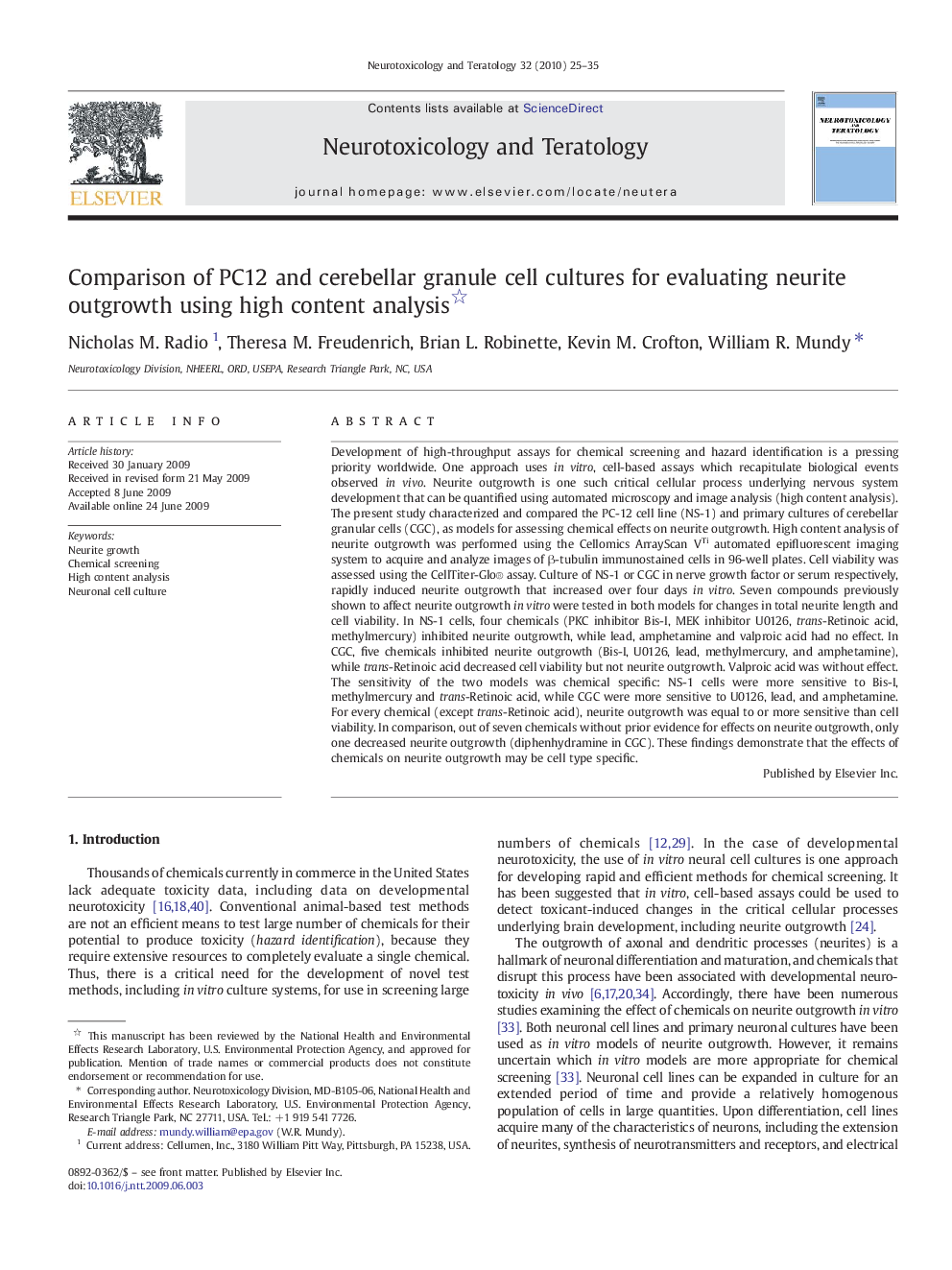| Article ID | Journal | Published Year | Pages | File Type |
|---|---|---|---|---|
| 2591566 | Neurotoxicology and Teratology | 2010 | 11 Pages |
Development of high-throughput assays for chemical screening and hazard identification is a pressing priority worldwide. One approach uses in vitro, cell-based assays which recapitulate biological events observed in vivo. Neurite outgrowth is one such critical cellular process underlying nervous system development that can be quantified using automated microscopy and image analysis (high content analysis). The present study characterized and compared the PC-12 cell line (NS-1) and primary cultures of cerebellar granular cells (CGC), as models for assessing chemical effects on neurite outgrowth. High content analysis of neurite outgrowth was performed using the Cellomics ArrayScan VTi automated epifluorescent imaging system to acquire and analyze images of β-tubulin immunostained cells in 96-well plates. Cell viability was assessed using the CellTiter-Glo® assay. Culture of NS-1 or CGC in nerve growth factor or serum respectively, rapidly induced neurite outgrowth that increased over four days in vitro. Seven compounds previously shown to affect neurite outgrowth in vitro were tested in both models for changes in total neurite length and cell viability. In NS-1 cells, four chemicals (PKC inhibitor Bis-I, MEK inhibitor U0126, trans-Retinoic acid, methylmercury) inhibited neurite outgrowth, while lead, amphetamine and valproic acid had no effect. In CGC, five chemicals inhibited neurite outgrowth (Bis-I, U0126, lead, methylmercury, and amphetamine), while trans-Retinoic acid decreased cell viability but not neurite outgrowth. Valproic acid was without effect. The sensitivity of the two models was chemical specific: NS-1 cells were more sensitive to Bis-I, methylmercury and trans-Retinoic acid, while CGC were more sensitive to U0126, lead, and amphetamine. For every chemical (except trans-Retinoic acid), neurite outgrowth was equal to or more sensitive than cell viability. In comparison, out of seven chemicals without prior evidence for effects on neurite outgrowth, only one decreased neurite outgrowth (diphenhydramine in CGC). These findings demonstrate that the effects of chemicals on neurite outgrowth may be cell type specific.
